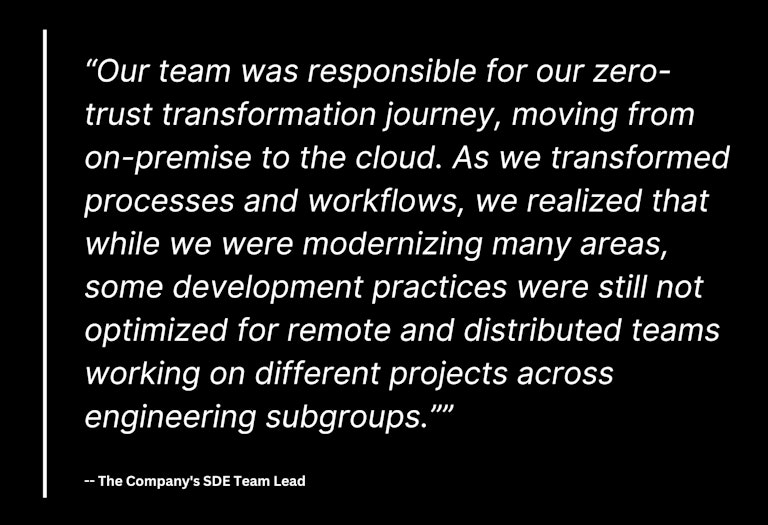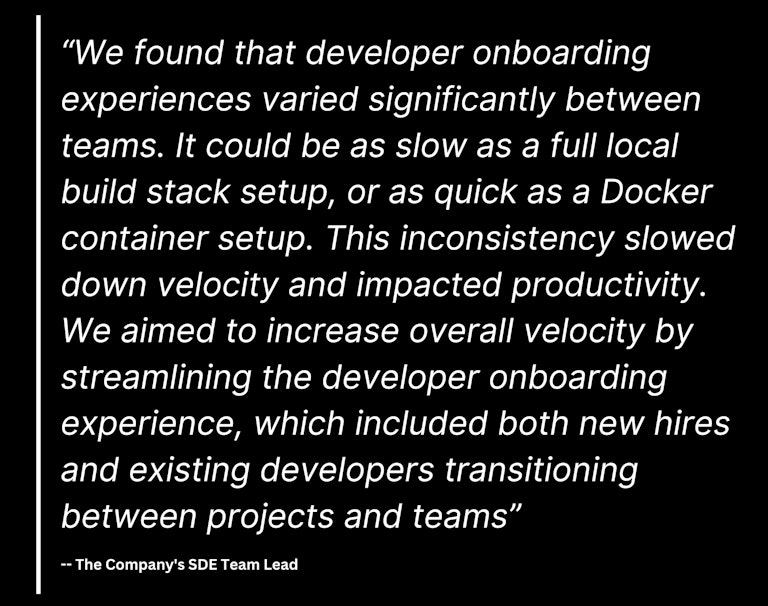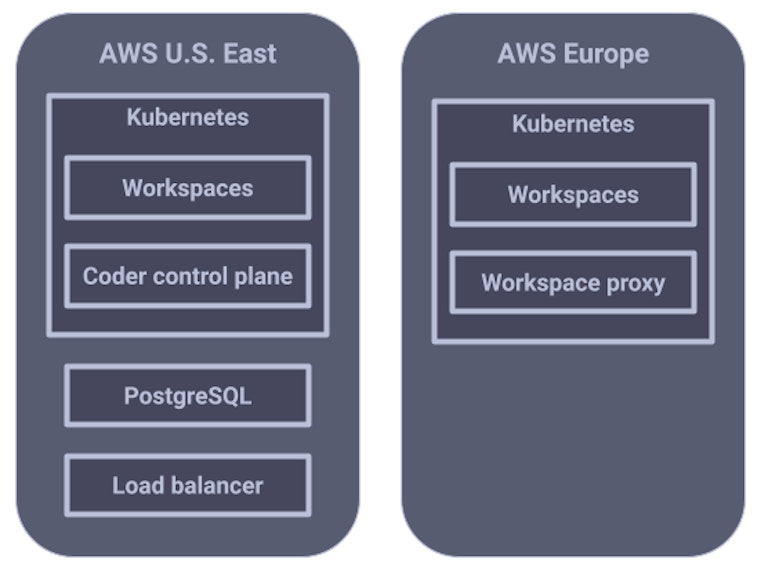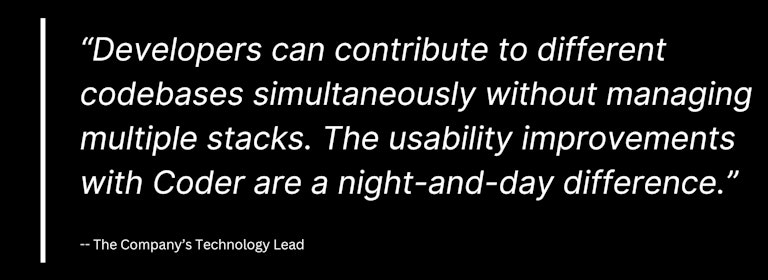
How Coder Helped a Global Investment Firm Improve DevEx and Cut Costs
A Fortune 500 Global Financial Services Firm was able to drastically improve developer experience, increase flexibilty and control spending after implementing Coder.
Overview
A leading global investment services organization, ranking among the Fortune 500, has been at the forefront of investment management for institutional clients worldwide. The organization provides services to pension funds, governments, and central banks. To maintain their competitive edge, the company heavily invests in its technology and talent.
At the core of their operations is a robust development team, responsible for building and maintaining the platforms and tools that drive their business. The Site Reliability Engineering (SRE) team is responsible for managing the infrastructure for the company’s software systems. That includes ensuring that developers have effective, reliable environments to work in.

Challenges: Growing project complexity slows developers
The company's developers, spread across multiple regions, work on complex projects with varying dependencies and build requirements. The traditional setup of local development environments on high-powered MacBooks wasn’t making sense anymore:
- Long onboarding: Some teams took up to two weeks to get new developers fully set up.
- Increasing build times: Gains in laptop capacities didn’t keep pace with rising project complexity, leading to productivity losses.
- Rising hardware costs: The SRE team spent more to provide and maintain powerful local machines. And because of a one-size-fits-all approach to equipping developers, there was the cost of over-specified hardware for projects that didn’t need it.
- Rising operational costs: The SRE team faced growing difficulties to support and manage development environments across global teams. Security: There were concerns about storing sensitive code and data on individual laptops.
These challenges were exacerbated by the company's transition to remote, distributed teams. It was crucial to find a solution that addressed these pain points while maintaining flexibility for developers.
Solution: Collaborate, measure, repeat
The SRE team set out to build better development infrastructure through Coder. They did what you’d expect any smart investor would do in the finance world: due diligence. That and collaboration before, during, and after the adoption.
Costs and benefits needed to be confirmed before and after adopting Coder:
- Stakeholders: Does the developer infrastructure match the requirements of the projects? The SRE team talked to senior developers and architects to get good insight on the infrastructure they need.
- Security: Can the developers continue working on sensitive code and data with proper security safeguards?
- Total cost of ownership (TCO): What does it cost to equip and support a developer? TCO isn’t just the cost of a new laptop. There are indirect costs, too, including hardware refreshes, cloud costs, and lost productivity due to onboarding delays that must be considered to justify the investment.
- Developer experience: Can developers and teams keep using their preferred tooling? Can the tooling still give the same low-latency responsiveness as local-based development?

The SRE team launched a pilot program. They started with a team that worked on one of the most complex build environments in the organization. For example, this team uses Bazel and Nix, which have specific caching and package management needs. This let the SRE team better understand how to balance pre-baked versus runtime downloads.
The pilot started with a Coder-Kubernetes setup on AWS. It hosts the Coder control plane and database, along with load balancing, in the U.S. eastern region.
With that deployment working well, the SRE team expanded to support European developers. To reduce network latency, they host workspaces through a Coder workspace proxy in an AWS European region. European developers still log in to the Coder control plane in the U.S. region. To start coding, developers start a workspace that matches their geographic region.
For security management, they put Coder behind a VPN. Coder workspace resources are connected through secure tunnels. Coder also supports enterprise security with features like RBAC, syncing with identity providers, and audit logs.

This setup scales easily. For example, they plan to expand Coder for western U.S. developers in the future. Like the European region, the western U.S. region will host workspaces managed by the Coder deployment in the eastern U.S.
Results:
With 300 developers using Coder and a clear understanding of TCO before and after adoption, the organization is happy with the results. Coder is the foundation for improved developer experience, reduced support effort, and lower costs on hardware and cloud spend.
Developers keep working the way they always have with fewer obstacles:
- Onboarding: Reduced to hours instead of weeks. One new hire was able to commit and merge changes on the first day.
- Improved developer experience: Developers now access their remote development environments through their preferred IDEs, such as VS Code. This also eliminates the need for expensive, powerful local machines.
- Swivel chair: Switching projects was reduced to minutes from hours. All that a developer has to do is start a different workspace in Coder.
- Security: Confidential data and proprietary code are securely stored in the workspace, not the developer’s laptop. Developers are still free to get work done as before with less risk of exposing sensitive information.

The SRE team can devote more time to more strategic initiatives, seeing gains in:
- Flexibility: Templates can be updated nightly to improve workspaces. Template parameters let individual developers adapt the workspace to their preferences. Template variables and Coder modules let the SRE team reuse template code.
- Collaboration: Globally distributed teams can work more efficiently on shared projects, since standardized templates have eliminated many of the inconsistencies that previously plagued the development process.
Conclusion: The investment is paying off
When a leading financial services organization looked for better developer experience, more flexibility, and controlling spend, they turned to Coder to address their immediate challenges while laying the groundwork for growth and innovation. Coder gave them the flexibility that their developers asked for while satisfying the stringent reliability and security requirements that their development processes need.
Want to know more about this organization’s experience? Their SRE team talked at our July 2024 webinar. Watch on-demand here.


